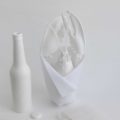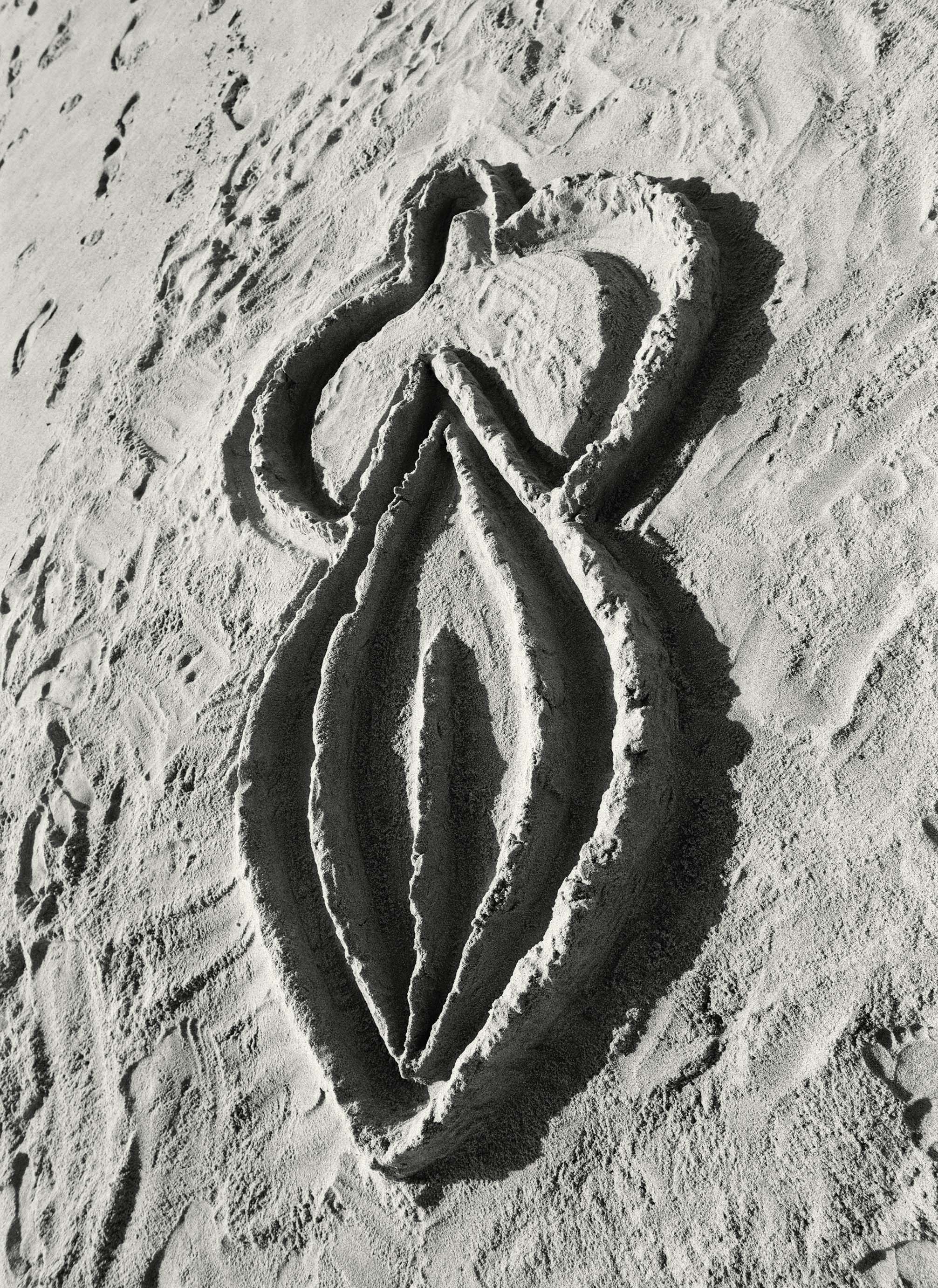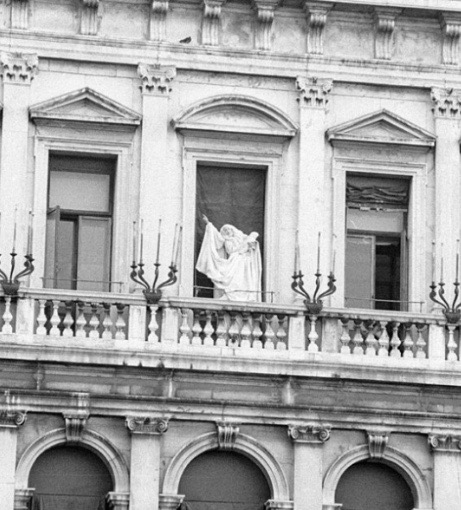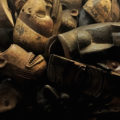Cinquième Corps, Noémie Goudal – Le BAL
From February 12 to May 8, 2016, Le Bal opens its doors to the first monographic exhibition dedicated to Noémie Goudal in France.
“Cinquième Corps” brings together some fifteen works by the artist, now living in London, and offers a broad panorama of her work through the series Search of the First Line (2014), Observatories (2014), Southern Light Stations (2015) and some unpublished pieces, created specifically for the place.
Majestic and enigmatic, Noémie Goudal’s photographs are challenging. Unseen and fantastic landscapes, halfway between reality and imagination, between nature and artifice, invite the spectator to contemplation and questioning. They are assembled from scratch, and the traces of their construction are left in evidence by the artist. Here is the thread that suspends a planet above a stretch of sand, there are sections of walls made of paper that are coming off… The artifice and the false are displayed, discreetly, certainly, but cannot be missed. However, it seems that this is where the power of the work is nestled. Noémie Goudal develops her art in the gap left by the border between nature and culture in order to create “other spaces”, “heterotopias” – according to the concept she borrows from Michel Foucault 1 – “created between a geographical reality and a part of the human imagination”.
How can we not accept to be caught in these fantastic places, which give themselves as false and yet possible? Mise en abyme after mise en abyme, the photographs of an abandoned architecture are mounted on supports and installed themselves in landscapes carefully chosen by the artist, or built in the studio, before being finally reintroduced, on a wall and a monumental format, in the space of the gallery. The process is explained to the visitor, who cannot remain impervious to the enchantment and attraction of these fantasy architectures, inspired sometimes by the geometric buildings of the Renaissance (In search of the first line II, III, IV), sometimes by the modernist concrete blocks (Observatories), sometimes even by science fiction (Stations). The artist’s multiple references confuse time and space in a place where everything has stopped. Despite the perspective imagined in each of the installations, or the almost brutal frontality of these pieces of architecture, everything is only dreamlike and impalpable.
The plasticity of the images still contributes to the delight. The play of chiaroscuro, the sharpness of the contours, the dark, cold and extremely reduced colours – often to black and white – all contribute to creating these fantastic environments, to the point of creating an impression of sublime almost romantic. But this “delicious horror” described by Burke 2, which makes man aware of his fragility and the unlimited nature of nature, is not caused here by an avalanche – as was the case for the philosopher – but by an architecture that blocks the landscape and nature, confined to the margins of photographs or to the openings delimited by the arcades of some, and which definitively eliminates man.
Thus, if Noémie Goudal’s work is so intriguing, it is because it deprives the viewer of any possibility of identification and any sense of familiarity. The disintegrated architectures, the disproportionate ruins, the empty landscapes finally reveal the human absence. However, this absence, far from creating unease, invites more than ever to the purest contemplation. The artist creates a new nature at the same time as she invites us to rethink the one in which we find ourselves. Following the example of Study on Perspective II, an installation for which a single point of view is designated to the viewer by footprints on which he must position himself. In the mirror it faces, a landscape already present in the backlit photographs surrounding it is recomposed by symmetry. A single image repeated three times, in which waterfalls, mountains, trees and even a mysterious human face barely sketched in the rock merge. A single point of view designated by the artist and yet a multitude of particular observations, an invitation to observe the detail and the way it fits into a whole. At the same time a reflection on space, the built, the norm and the place of man, geometry and poetry, Noémie Goudal’s work gives a new depth to the flatness of the photographic medium.
The exhibition is an almost metaphysical experience, especially since at Le Bal the works are in perfect harmony with the space in which they are exhibited. The three rooms give the images their full power of expression thanks to the sobriety of the decor and the place they give to each one. The hanging allows them to respond to themselves as much as they are considered for themselves, encompassing the spectator without ever suffocating him, as many possible immersions in the different environments deployed by the artist.
Horya Makhlouf
1 Michel Foucault, Dits et écrits 1984, Des espaces autres (conference at the Cercle d’études architecturales, 14 March 1967), in Architecture, Mouvement, Continuité, n°5, October 1984, pp. 46-49.
2 Edmund Burke, Philosophical Research on the Origin of Our Ideas of the Sublime and the Beautiful, 1757.
Headline photo: Station II, Noémie Goudal, 2014. Courtesy Noémie Goudal / Edel Assanti / Les filles du calvaire.
Noémie Goudal
“Cinquième Corps”
Le BAL
From February 12 to May 8, 2016
6 Impasse de la Défense, 75018 Paris
http://www.le-bal.fr/






